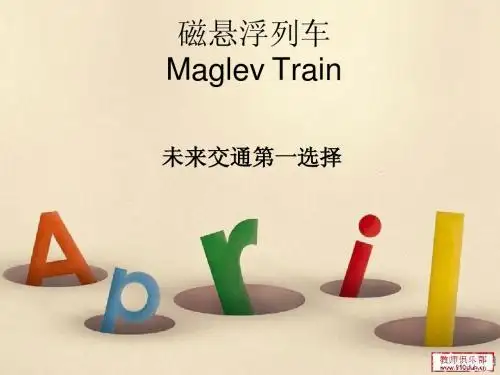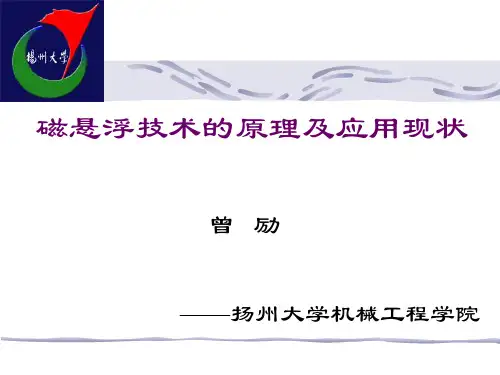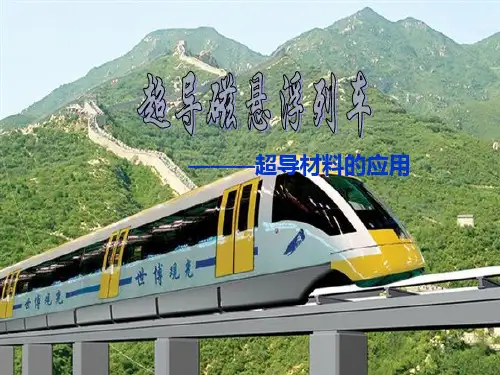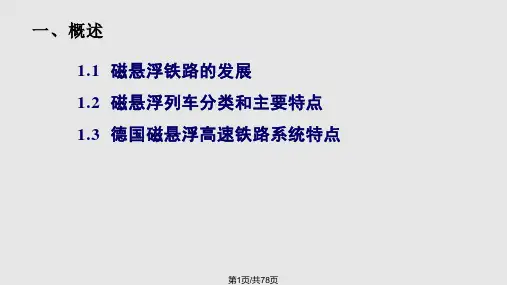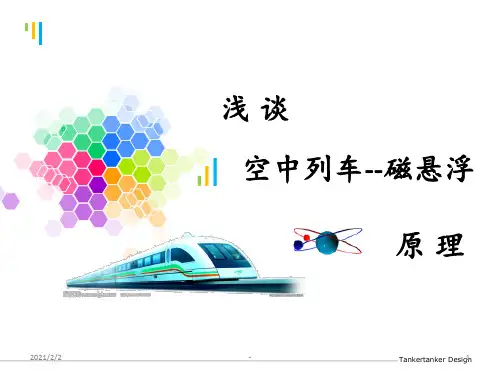兰博基尼Reventon:0~100km/h加速只要3.3秒,极速则是轻松突破340km/h。 McLaren F1 :0-100kph用时:3.2s极速(公证记录):386km/h 世界第一跑车布加迪威龙:0-100km/h加速:2.5秒最高时速达到407KM/H。
• •
• • •
•
磁悬浮的前景
• 它比目前最先进的高速火车省电30%。在500公里/小时速度下,每座位/公里的能耗 仅为飞机的1/3至1/2,比汽车也少耗能30%。因无轮轨接触,震动小、舒适性好, 对车辆和路轨的维修费用也大大减少。磁悬浮列车在运行时不与轨道发生摩擦,发出 的噪音很低。它的磁场强度非常低,与地球磁场相当,远低于家用电器。由于采用电 力驱动,避免了烧煤烧油给沿途带来的污染。 在高速状态下运行时,列车的稳定性和可靠性也需要长期的实际检验。列车在运行时 需要以特定高度悬浮,因此对线路的平整度、路基下沉量等的要求都很高。如何避免 强磁场对人体及环境的影响也一定要考虑到。即便有解决以上技术难题的手段,但是 又牵涉到另外一个问题——钱。 1厘米线路就得花上3000元! •Than the most advanced high-speed train power 30%. 500 km / h speed, the per seat / km energy consumption only aircraft 1 / 3 to 1 / 2, less energy than cars 30%. In the absence of wheel-rail contact, vibration small, comfortable and good maintenance of vehicles and tracks costs significantly reduced. Maglev trains running without friction with the track, the noise is low. Its magnetic field strength is very low, and Earth's magnetic field very much lower than household appliances. As a result of power-driven, coal and oil to avoid along the pollution. In high speed running, the trains also require long-term stability and reliability of the actual test. Train in the run-time needs to be given a high suspension, so the flatness of the line, roadbed subsidence and other requirements are high. How to avoid strong magnetic fields on the human body and the environment also must be taken into account. Even if there is a means to solve the above technical problems, but it involves another problem - money. 1 cm line have to spend 3000 doll1922年德国工程师赫尔曼·肯佩尔 就提出了电磁悬浮原理,并于1934年申 请了磁悬浮列车的专利。 日本于1962年开始研究常导磁浮铁路。 此后由于超导技术的迅速发展,从70年 代初开始转而研究超导磁浮铁路。1972 年首次成功地进行了2.2吨重的超导磁 浮列车实验,其速度达到每小时50公里。 德国对磁浮铁路的研究始于1968年(当 时的联邦德国)。并于1980年开工兴建, 1982年开始进行不载人试验。列车的最 高试验速度在1983年底达到每小时300 公里,1984年又进一步增至400公里。 1994年,西南交大就研制成功中国第一 辆可载人常导低速磁浮列车,但那是在 完全理想的实验室条件下运行成功的。 西南交通大学在2000年研制的世界第 一辆载人高温超导磁悬浮列车“世纪号” 以及后来研制的载人常温常导磁悬浮列 车“未来号”等受到胡锦涛、江泽民等 党和国家领导人的高度关注和充分肯定。

